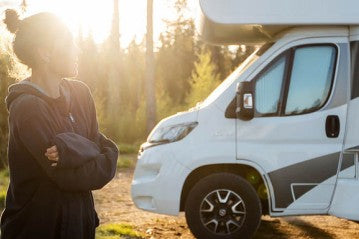
Imagine embarking on an adventure in your van, powered entirely by the sun's energy. Installing a solar power system in your van not only offers energy independence but also contributes to a sustainable and eco-friendly lifestyle. In this comprehensive guide, we will walk you through the process of installing a solar power system in your van, covering everything from sizing your electric system to understanding the costs involved. So, let's dive in and learn how to harness the power of the sun for your van!
I. Sizing Your Electric System
To ensure your solar power system meets your energy needs, it's essential to accurately size it. Here's how:
A. Assessing your energy needs:
Start by calculating your daily energy consumption. Consider the appliances and devices you plan to power in your van, such as lights, fans, refrigerators, and electronics. By understanding your energy requirements, you can design a system that meets your specific needs.
B. Determining the solar panel capacity:
Solar panels are the heart of any solar power system. Understanding their capacity is crucial for effective energy generation. Consider factors such as panel efficiency, positioning, and the available roof space on your van. By evaluating these aspects, you can determine the number of solar panels needed to power your van efficiently.
II. Installing Solar Components
Now that you have determined the size of your electric system let's delve into the installation process. Here are the key components you'll need:
A. Solar panels:
Solar panels are responsible for capturing sunlight and converting it into electricity. There are various types of solar panels available, including monocrystalline, polycrystalline, and flexible panels. Assess their pros and cons based on factors like efficiency, durability, and cost. Once you've selected the appropriate panels, securely mount them on your van's roof to maximize sun exposure.
B. Solar charge controller:
A solar charge controller regulates the flow of energy from the solar panels to your battery bank. It prevents overcharging and optimizes the charging process. There are two main types of charge controllers: PWM (Pulse Width Modulation) and MPPT (Maximum Power Point Tracking). Consider your energy requirements and select the right charge controller for your system.
C. Solar battery bank:
Solar batteries store the energy generated by your solar panels for later use. Deep-cycle batteries are commonly used in solar power systems. However, lithium-ion batteries are gaining popularity due to their higher efficiency and longer lifespan. Ensure proper wiring and connection of the battery bank to your van's electrical system for seamless energy distribution.
D. Inverter:
An inverter converts the direct current (DC) power stored in your batteries into alternating current (AC) power, which is compatible with most household appliances. There are two types of inverters: modified sine wave and pure sine wave. Assess your appliance requirements and select the appropriate inverter accordingly. Install the inverter safely to ensure optimal performance and longevity.
III. Cost of Installing Solar
A. Equipment costs:
Solar panel prices vary based on factors such as brand, quality, and capacity. Similarly, charge controllers, batteries, and inverters come in a range of prices. Research different options and select components that align with your budget and quality requirements. Remember, investing in high-quality components will ensure better performance and longevity.
B. Installation expenses:
You have the option to either embark on a DIY installation or seek professional assistance. If you're confident in your skills and knowledge, a DIY installation can save you labor costs. However, for complex electrical work, it's advisable to consult professionals to ensure safety and proper functioning of your solar power system.
C. Return on investment:
Installing solar power in your van offers long-term savings. By reducing your reliance on traditional fuel sources, you can save money on fuel consumption. Additionally, campsites and RV parks often charge fees for electrical hookups, which you can avoid by utilizing solar power. Furthermore, there may be incentives, grants, or tax credits available that can offset a portion of your upfront costs. Explore these opportunities to maximize your return on investment.
Conclusion
Congratulations! You are now equipped with the knowledge and understanding to install a solar power system in your van. By sizing your electric system correctly, installing the necessary components, and considering the costs involved, you can embark on a sustainable and environmentally friendly journey. Embrace the power of solar energy, reduce your carbon footprint, and enjoy the freedom of energy independence on your van adventures. So, get started today and harness the abundant power of the sun!

0 comments